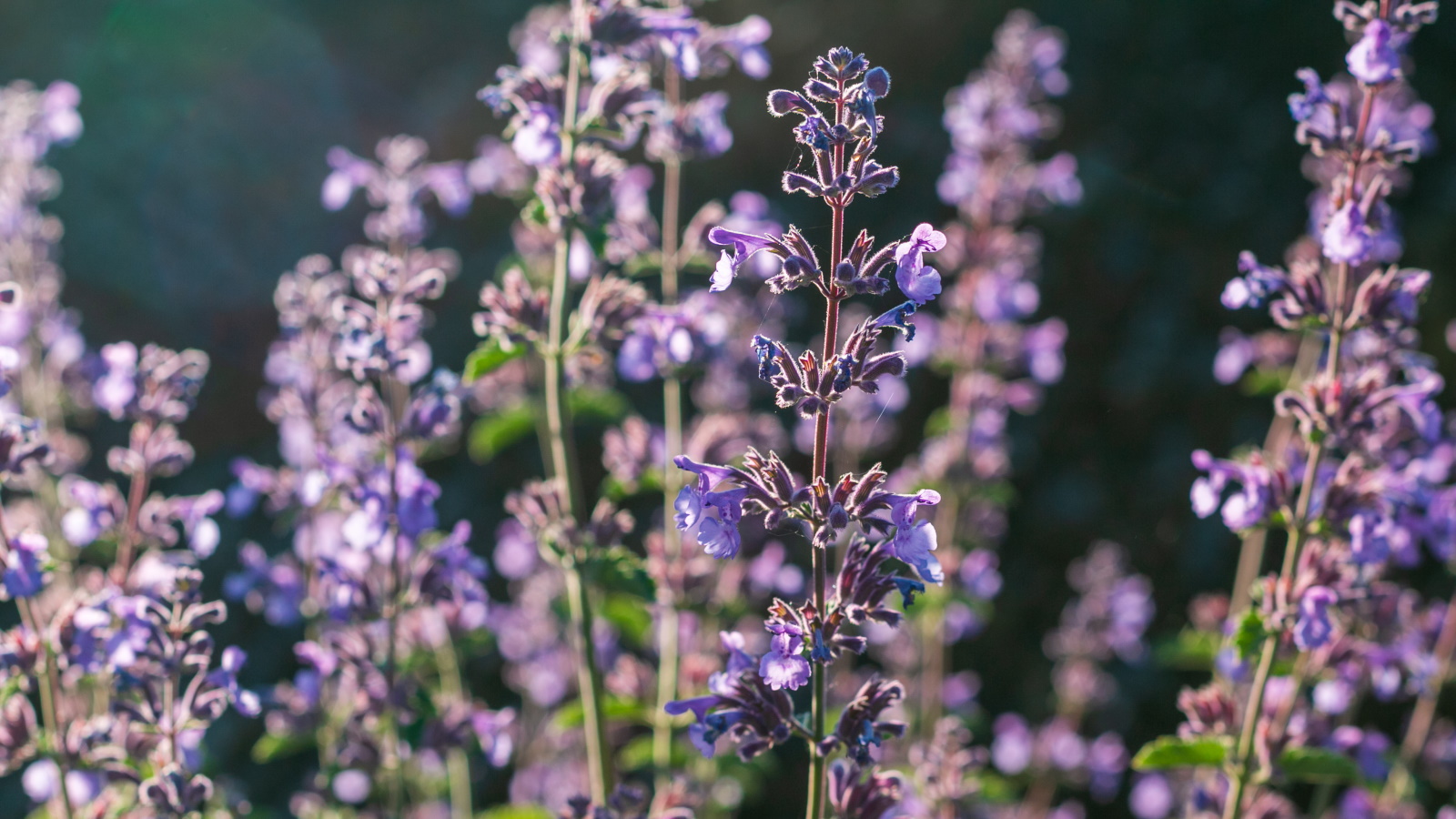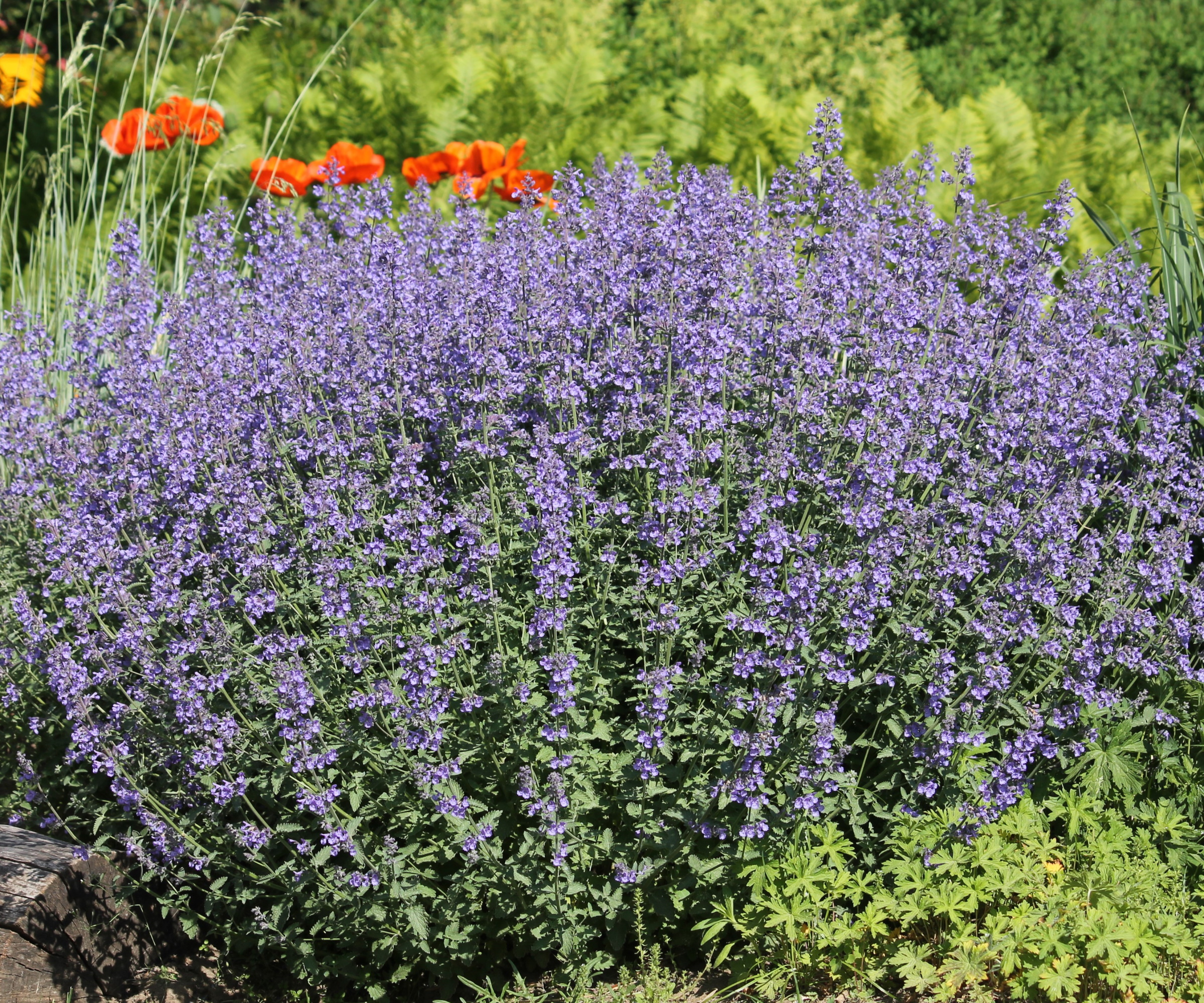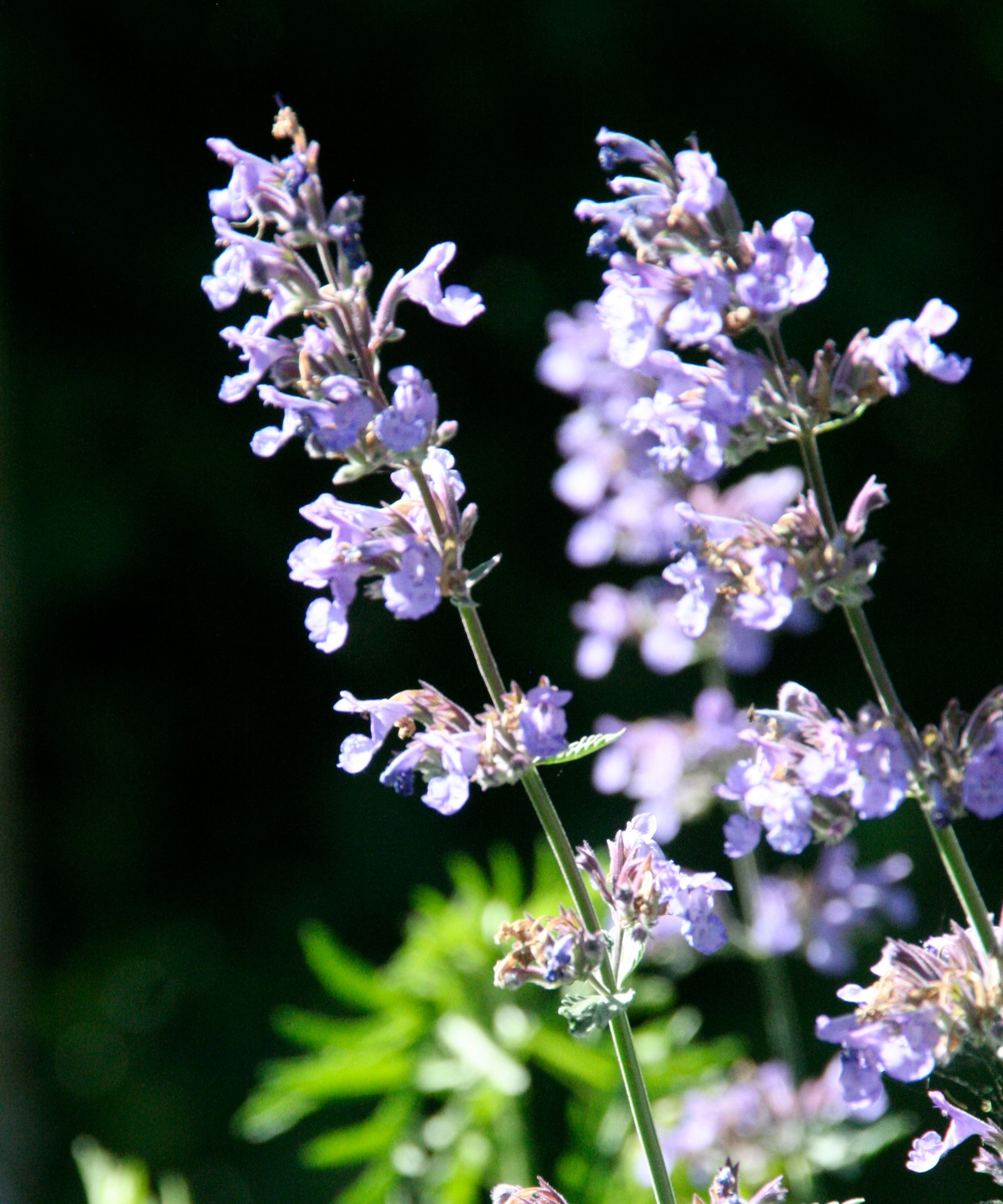Catmint vs catnip – what is the difference between these popular perennials?
Discover how to discern the difference between these plants and grow what's most suitable for your yard


It may not be keeping you awake at night, but knowing the difference between catmint vs catnip is helpful and could impact the appearance and enjoyment of your yard.
There are plenty of similarities between these two plants – both are aromatic flowering perennials from the Nepeta genus, or mint family. Yet there are some subtle differences between their appearance and properties. How to grow catmint and how to grow catnip also varies, which may make you err towards planting one over the other.
We've asked horticultural and gardening experts to explain what distinguishes these plants, so you can decide which is best for your flower beds, your feline friends – or to deter unwanted visitors in your yard.
Catmint vs catnip – what is the difference?

Catmint growing in a flower bed
If you are a cat owner and want to keep your pets happy, catnip is a good choice, while keen gardeners who are more interested in aesthetics and a plant's color and form – and don't want the neighborhood's felines hanging out in their yard – may prefer to grow catmint.
'Catmint and catnip are often confused because they both belong to the Nepeta genus in the mint family (Lamiaceae), but they do have some key differences,' explains Tabar Gifford, master gardener and representative, American Meadows.
'Catnip (Nepeta cataria) is best known for containing nepetalactone, the compound that causes euphoric reactions in many cats. This plant has pale green, heart-shaped leaves and small white to lavender flowers.
'However, Catmint, particularly ornamental hybrids like Nepeta × faassenii (‘Walker’s Low’), is more refined in appearance. It forms neat, mounding clumps of silvery-green foliage and produces abundant spikes of lavender-blue flowers. Catmint is rarely as enticing to cats, but its visual appeal in the garden makes it a favorite for gardeners.'
Design expertise in your inbox – from inspiring decorating ideas and beautiful celebrity homes to practical gardening advice and shopping round-ups.
This Walker's Low catmint from Nature Hill's can be grown in zones 4-9 and is adaptable to various soil types.

Tabar Gifford is a Master Gardener, and dedicated “plant geek”. With a lifelong love for gardening and nature, and a background in environmental studies and sustainable community development, she combines horticultural expertise with a commitment to education. Striving to empower individuals in achieving their gardening aspirations, Tabar embodies a genuine passion for sharing her knowledge. She gardens in zone 4 in Vermont.
Differences in growing catmint vs catnip

Catnip flowers tend to be paler than catmint
Both of these Nepeta species are low-maintenance and drought-tolerant plants once established and there are many similarities in the conditions they like. Yet, growing them differs and can help to distinguish them.
'Most cultivars of catmints are sterile and cannot be grown from seed but are readily available as container grown plants,' explains Justine Kandra, horticulturalist, Missouri Botanical Gardens.
'Plant them in spring or fall and water well for the first few weeks after planting, to promote strong root establishment.
'Catnip can be planted the same way, but can also easily be grown from seed. Just start the seeds indoors in a warm spot 6 weeks before the average last frost date.'
Tabar adds, 'Catnip thrives in USDA zones 3–9 and prefers full sun to partial shade. It does well in average, well-drained soil and will tolerate moderate watering. Blooming in mid-to-late summer, catnip also self-seeds prolifically, so gardeners should plan for potential spreading or prune it back before seeds set.
'Catmint generally grows well in zones 3–8 and prefers full sun and dry, well-drained soil, which makes it a good choice for xeriscaping or low-water gardens.'
For a vibrant pop of lavender-blue color, consider this 'Cat's Meow' Catmint from Nature Hills.

Justine Kandra is a horticulturist at the Missouri Botanical Garden in St. Louis, Missouri. A botanist by training, she enjoys helping patrons with their plant problems at the Kemper Center for Home Gardening.
How to easily tell these plants apart

As outlined already, the flowers on these plants differ in color and appearance, and this is usually the simplest way to tell them apart (as opposed to comparing the shape and color of the leaves).
Catmint is a common name applied to a number of species and hybrids in the genus Nepeta, so there will be variations in flower color and size. However in general, catmint has a neater, more compact and vibrant look, than catnip.
'The flowers of cultivated catmints are usually violet-blue in color and held in dense, upright spikes or panicles, but other species can have violet-pink or white colored blooms,' continues Justine.
'Most have a clump-forming, rounded to mounding growth habit and can reach up to 3' tall but shorter hybrids are quite popular, some only reaching a little more than foot tall. The leaves and stems of catmints have a minty aroma and are not as attractive to cats as catnip.
'Unlike most of the commonly sold cultivars of catmints, catnip is a spreading plant that can be somewhat aggressive when planted in the ground. It will spread from seed and by underground runners.'
Start this Catnip from Burpee from seed and grow it in a pot if you want to keep it contained. As well as keeping any feline friends entertained, the leaves can be used in tea too.
Generally, you are also more likely to find catmint plants for sale in garden centres, than catnip. Both catnip and catmint can be grown in pots, or directly in the ground. Just ensure they have access to plenty sunshine and well-draining soil, whichever of these aromatic plants you decide to grow.
Jacky Parker is a freelance lifestyle journalist and writer, producing a wide range of features for magazines and websites. She has written for Homes & Gardens and its sister titles, Livingetc and Country Homes & Interiors for more than 15 years, both as a freelance contributor and staff member, regularly reporting on the latest interiors, gardens and lifestyle inspiration, speaking to experts in their respective fields and discovering the newest tips.
You must confirm your public display name before commenting
Please logout and then login again, you will then be prompted to enter your display name.
